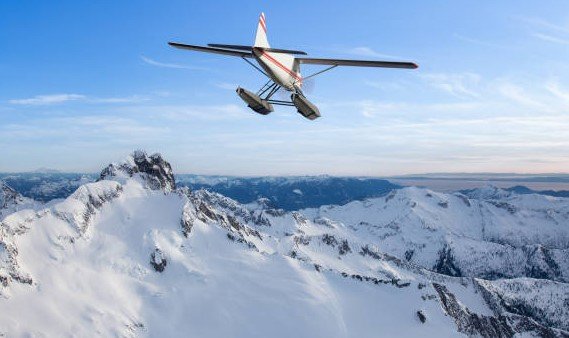Airbus and Silicon Valley’s SandboxAQ fly new quantum sensing tech across the U.S., unlocking resilient alternatives to satellite-based systems
In the cloudless blue over California’s Mojave Desert, a test aircraft from Airbus quietly flew a flight path most would consider unremarkable. But beneath its sleek belly, an experimental device was doing something extraordinary: finding its location without using GPS.
In a partnership that blends aerospace legacy with quantum-age innovation, Airbus has joined forces with SandboxAQ—a Silicon Valley firm spun out of Alphabet—to test a radical new navigation method based on quantum sensing. The system, called MagNav, may one day offer a viable backup—or even a replacement—for GPS in the skies.
The technology promises something that satellite navigation never could: immunity to jamming, spoofing, or outages.
And in an age when military and civilian aircraft are increasingly vulnerable to GPS disruption, that promise has real urgency.

When GPS Fails, Planes Lose Their Compass
The problem is simple, but growing. Aircraft navigation today is almost entirely reliant on GPS—an elegant but fragile solution.
“GPS is incredibly powerful,” said one aerospace engineer familiar with the project. “But it’s a single point of failure. If someone knocks it out, spoofed it, or if the satellites go offline, you lose both position and time. For aviation, that’s catastrophic.”
GPS jamming incidents, once rare, are becoming routine in parts of the world like Eastern Europe, the Middle East, and Asia. Both commercial jets and military drones have reported navigation disruptions. In conflict zones, spoofing tools can feed fake coordinates to onboard systems, tricking them into drifting off course or even into enemy airspace.
Airbus and SandboxAQ believe MagNav could offer a robust safeguard.
Navigating by Nature’s Signature
MagNav doesn’t rely on satellites. Instead, it reads the Earth’s own magnetic signature.
Think of the planet’s crust like a fingerprint—irregular, unique, and persistent. Just as birds are thought to migrate using natural magnetic cues, MagNav scans for subtle variations in local magnetic fields to determine its location.
The system pairs sensitive magnetometers with onboard artificial intelligence. By comparing live magnetic readings to a detailed geomagnetic map, the aircraft can fix its position with startling precision—even when GPS is jammed or unavailable.
Over 150 hours of test flights across the continental United States, Airbus subsidiary Acubed integrated MagNav into its “flight lab” testbed. The quantum sensor consistently returned location fixes accurate enough to meet, and sometimes exceed, FAA standards for aviation-grade navigation.
“It’s like having a backup sense of direction built into the aircraft,” said a person briefed on the testing results. “No satellites needed. No external signal. Just physics.”
From Lab Curiosity to Airborne Reality
The idea of using the Earth’s magnetic field for navigation isn’t new. But making it precise—and practical—for flight? That’s a modern engineering challenge.
At the heart of MagNav is a quantum magnetometer—a device sensitive enough to detect minuscule changes in magnetic flux. Traditionally, such instruments lived in lab environments. Now, miniaturization and AI integration are bringing them into the cockpit.
SandboxAQ, which focuses on applying quantum technology to real-world problems, sees aerospace as a key early market. The company emerged from Alphabet in 2022 and is backed by investors including former Google CEO Eric Schmidt.
“This is the convergence of quantum sensing and machine learning,” said Jack Hidary, CEO of SandboxAQ. “We’re not just making better instruments—we’re building smarter, more resilient navigation systems.”
A New Era of Contested Navigation
The geopolitical stakes couldn’t be clearer.
From drone swarms in the Red Sea to jamming incidents near Russian and Chinese borders, navigation is no longer a given. The U.S. military is acutely aware of the vulnerability. In fact, the Department of Defense has explicitly prioritized “Positioning, Navigation and Timing” (PNT) resilience in recent budget cycles.
The FAA, too, has called for backup options to augment GPS, especially for commercial aviation.
Quantum navigation systems like MagNav are now entering a field once dominated by inertial sensors and legacy radio systems. They offer a compelling advantage: they don’t drift over time and don’t rely on any external signal. That makes them ideal for high-risk environments or denied areas.
“In a future conflict, GPS may be the first target,” said one Pentagon official. “Quantum sensing could be the insurance policy.”
What Comes Next?
Airbus and SandboxAQ aren’t the only players eyeing this space. Governments from the U.S. to the UK, Australia, and Japan are funding quantum navigation projects. Defense contractors like BAE Systems and Honeywell are also exploring magnetic or quantum-based alternatives.
But MagNav’s move from theory to test flights puts it ahead of the curve.
Sources say Airbus and SandboxAQ are now working to refine the system, improve map granularity, and prepare for expanded trials in Europe and Asia. Integration into military aircraft or commercial airliners could still be several years away, but the foundation is being laid now.
Meanwhile, the global airline industry—and defense ministries—are watching closely.
Because while GPS got us this far, it may not get us through what comes next.








